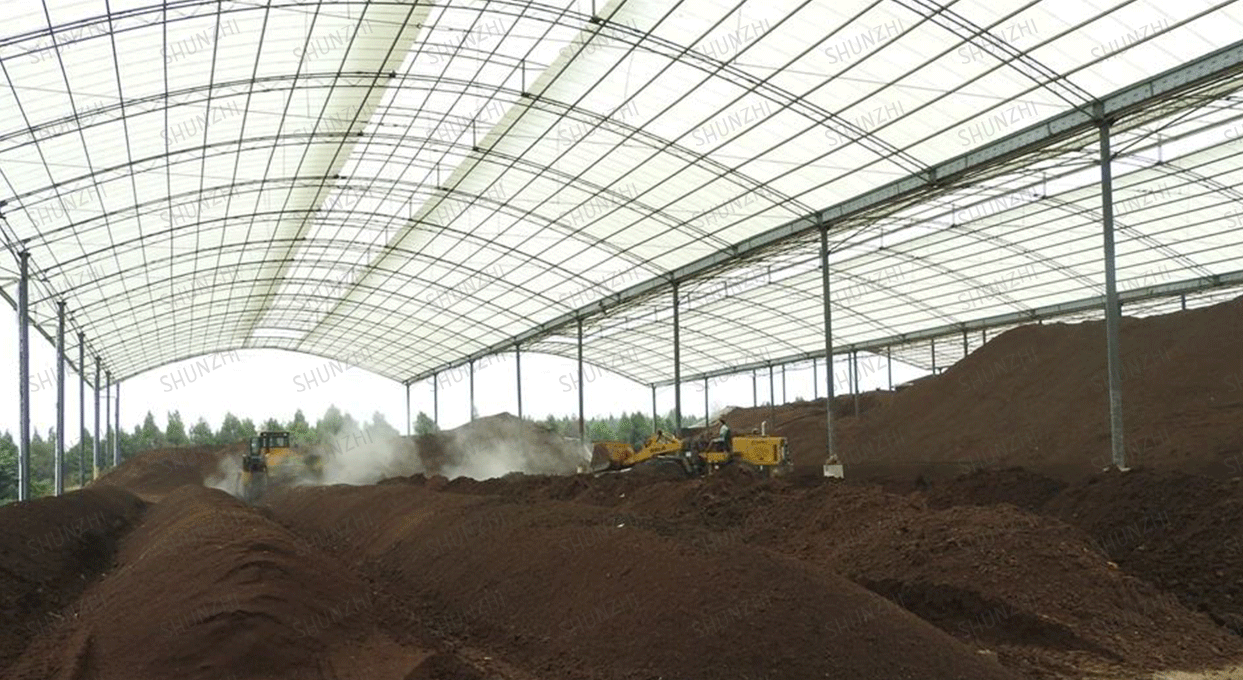French Cow Dung Composting Fermentation Line
French Cow Dung Composting Fermentation Line
Cow dung organic fertilizer raw materials:
The cow dung raw material should be pretreated before composting, so as to meet the fermentation conditions such as moisture and carbon-nitrogen ratio. Under normal circumstances, the carbon-nitrogen ratio of cow dung raw materials is 19-23:1, which is basically suitable for composting requirements, but the moisture status of cow dung varies greatly. The moisture content of cattle dung in large-scale farms is as high as 60%-80%, and measures must be taken to reduce the moisture to 50%-60% before composting. To adjust the moisture content of cow dung, it is recommended to use the method of back material blending to reduce the moisture, that is, adding the fermented low-moisture cow dung material (about 30% moisture) to the high-moisture cow dung pile, and mixing the two dry and wet materials can effectively The overall compost raw material moisture is reduced, and the advantages of this pretreatment method are that the raw materials are easy to obtain and the processing cost is low. If the moisture content of fresh cow dung is more than 80%, methods such as solid-liquid separation of cow dung can also be used to reduce the moisture.

There are two main methods of aerobic composting of cow manure:
1. Strip-type composting process: The materials with suitable moisture adjustment are layered into strips according to height and width, and the strips are arranged in parallel on a flat compost field in the open air or indoors, and a professional turner is used to ride on the material. Continuous turning operations on the heap. The cross-sectional shape of the stockpile is triangular or trapezoidal: 1.5-2.5m wide, 0.8-1.4m high, and 50-150m long (depending on the shape and size of the composting site). The process features: the mechanical turning operation has strong mobility, and the use of strip stacks is conducive to the loss of water in the later stage of composting; low requirements for civil engineering, no need for supporting fermentation tanks, and can be composted outdoors, saving construction investment; composting site area needs to be relatively Larger; outdoor composting in northern regions has poor thermal insulation in winter, and the composting cycle needs to be extended or composting should be stopped seasonally; open-air composting is easily affected in the rainy season, and it is recommended to cover with a canopy if possible.
2. Solar fermentation tank type composting process: The materials with suitable moisture adjustment are placed in the fermentation tank of the solar composting workshop through a cloth truck or a forklift. The suitable height of the fermentation tank is 1.0-1.3m, the width is 6m, and the length is 50-100m, which can be determined by referring to the area of the cattle farm and the shape of the plot. The process has the following characteristics: it can realize a continuous fermentation process in which one end of the fermentation tank is fed and the material is discharged at the other end, and it can also realize a full tank batch fermentation process; forced mechanical turning and aeration and pipeline ventilation and aeration are adopted. ; The solar composting workshop has good heating and thermal insulation effects and regulation functions, and can be used for composting production all year round. Considering the material characteristics of cow dung, in order to save investment, the solar composting workshop can also be replaced by a canopy in the southern region.
According to the moisture content of cow dung raw materials, one of the above composting processes can be selected, or two composting processes can be combined for composting. For example, the cow dung is first composted at high temperature through the trough composting method. After being harmless, the material is removed from the fermentation tank to the composting yard area for secondary fermentation and further reduction of moisture, so as to promote the further humification and mineralization of organic nutrients. , and then decomposed. The investment in equipment combined with the two processes has increased slightly, but the composting efficiency and quality have been improved.

